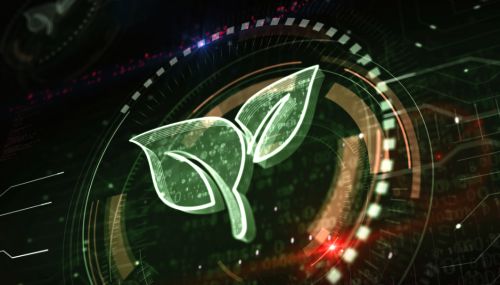All
Biodiesel Blend Margins – The Art and The Science
by Michael Devine, AMERIgreen Energy

EDITOR’S NOTE: The views and opinions expressed in this article are those of the author and do not necessarily reflect the policy or position of New England Fuel Institute.
The distribution of biodiesel-blended fuel has grown dramatically over the past 15 years in the heating oil sector. There are important, positive attributes of biodiesel-blended fuels such as reduced toxic emissions; a cleaner and better performing fuel; and providing the Oilheat consumer with the ability to receive a domestically produced, renewable energy for little to no added cost and with no equipment modifications.
Those entrepreneurial marketers who have been in the biodiesel game and have successfully communicated these benefits to their customers have created a real innovative and contemporary marketing program. They have also become very astute to the biodiesel blend margin opportunities as they present themselves throughout the year.
This 2015-16 heating season has been filled with various challenges to those blend margins. Crude oil’s 71 percent price decline since 2014 has reduced the price of heating oil and diesel fuel. At the same time, the United States has shown a renewed commitment to renewable fuels, with the Obama administration mandating their increased use.
The continued drop in oil prices and refined products continues to adversely impact the biodiesel industry, and the steady decline puts biodiesel at a competitive disadvantage to heating oil. NYMEX ultra-low sulfur diesel (ULSD) futures fell to 86.57 cents/gal on January 21st – the lowest level in more than 10 years.
Blend Margin Influencer No. 1: BOHO Spread
There are several significant factors that impact the net pricing of the biodiesel gallon. There is the relationship between the price of the biodiesel feedstocks – such as soybean oil – and heating oil futures. We call this relationship the Bean Oil Heating Oil (BOHO) spread. This pricing variance measures the pricing distance between biodiesel and diesel fuel. The BOHO spread is one of the key pricing factors that biodiesel producers use to determine margins. Unfortunately, this spread has grown dramatically in recent months. On January 20, 2016 the BOHO spread reached $1.33/gallon, the highest level since June 1, 2011.
Blend Margin Influencer No. 2: RINs
Low ULSD futures clearly can place biodiesel at a competitive disadvantage. The BOHO spread widening also negatively impacts the blend margins for biodiesel. So where is the silver bullet that we are looking for our blend margins? It’s the Renewable Identification Numbers (RINs). The saving grace, so far, for the heating oil markets to be able to enjoy blend margins this heating season has been the performance of the RINs since the announcement of the finalized Renewable Volume Obligations (RVOs) in November and the passage of the biodiesel blenders tax credit in December. These D4 RINs category values have been trading in a range between $0.70 – $0.80 on a moving average through the first part of February. As positively as the RINs markets have been performing over the past few months, marketers need to beware. As we saw in 2015, the RINs lost momentum and crashed, as foreign imports began to hit the U.S. shores in the 2nd quarter of 2015.
The end of 2015 saw a strong effort from the National Biodiesel Board to lobby Congress for a change of the existing blenders tax incentive and move it to a U.S. biodiesel producers tax credit. This uncertainty had a profound impact on imports, because they would not be eligible for the producers tax credit. Due to this uncertainty, very few foreign biodiesel cargos were booked, and because of this we have continued to maintain a strong D4 RINs market. If form holds true from 2015, we will likely see the next wave of imports in late April and – we would strongly argue – also see a decline in the D4 RINs complex do to a vastly oversupplied market.
The most active biodiesel import activity originates from Argentina, while the largest renewable diesel origin is Singapore. Both significantly impact the RINs markets, as both products are able to generate RINs under the EPA’s RFS (Renewable Fuels Standard) program. At the end of September 2015, the nations of Argentina and Indonesia accounted for 75 percent of all biodiesel imported to the United States.
The biodiesel RINs landscape has changed significantly over the past couple of years. When looking at combined renewable diesel and biodiesel imports, it is becoming apparent that Singapore and Argentina are the most significant and competitive threats to the U.S. domestic RINS D4 category under the RFS.
The shame of all of this is that the U.S. biodiesel production has grown steadily over the past 15 years and is more than capable of meeting and exceeding all of the biodiesel supply needs of the Mid-Atlantic and Northeast. At AMERIgreen we have been actively locking in the current RINs values for our customers and providing them with strip purchasing programs that provide strong blend margins through 2016, due to the fear of the RINs complex deteriorating with the impending imports.
Blend Margin Influencer No. 3: Biodiesel Tax Credit
Our last concern to our blend margins moving forward is the status of the $1.00 per gallon biodiesel tax credit and its future as we move through 2016. Through November 2015, the EPA reported that 1.81 billion D4 gallons moved through the EMTS system (EPA Moderated Transaction System). Of that, renewable diesel imports accounted for 10 percent of overall production, while biodiesel imports were 16 percent of the total. These percentages represent D4 import activity accounting for 26 percent of U.S. production. This is a significant portion of the U.S. D4 mandate, and it also means that U.S. taxpayers are subsidizing quite a bit of foreign production through the $1 per gallon tax credit.
Through November 2015, 472.3 million gallons have been imported and will be eligible for the blenders tax credit. These facts and figures could represent a huge sticking point for Congress; our concern is that the status quo just may not pass the smell test.
At AMERIgreen we recognize the benefits of fuel diversity and available biodiesel supply. To be honest it’s been our experience that providing robust biodiesel blend margins to our distributors involves a whole host of factors and market indicators, such as the price of heating oil and diesel fuel; the price of biodiesel feedstocks; the values of the D4 RINs; and the continued existence of the biodiesel tax credit.
Related Posts
 Care and Treatment of Biodiesel Blends
Care and Treatment of Biodiesel Blends
Posted on December 18, 2025
 EIA Winter Fuels Outlook
EIA Winter Fuels Outlook
Posted on December 18, 2025
 How to Set Your Business Apart with Renewable Propane
How to Set Your Business Apart with Renewable Propane
Posted on October 16, 2025
 EIA Report: Biodiesel and Renewable Diesel Imports Fall Sharply
EIA Report: Biodiesel and Renewable Diesel Imports Fall Sharply
Posted on October 16, 2025
Enter your email to receive important news and article updates.
